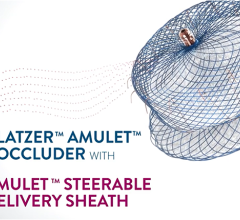
October 27, 2016 — Acutus Medical announced the completion of the first patient procedure in the “Utilizing Novel Dipole Density Capabilities to Objectively Visualize the Etiology of Rhythms in Atrial Fibrillation” (UNCOVER-AF) clinical study. The study will evaluate the incidence of device and procedure-related safety, effectiveness and efficiency using the AcQMap High Resolution Imaging and Mapping System to guide ablation in persistent atrial fibrillation (AF) patients.
Acutus Medical received CE Mark approval for the AcQMap System and AcQMap Catheter in May 2016. Patients are currently being enrolled in the UNCOVER-AF clinical study at electrophysiology (EP) centers of excellence throughout Europe and Canada. The first procedure was successfully completed by Andrew Grace, M.D., Ph.D. and Sharad Agarwal, M.D., at Papworth Hospital in Cambridge, United Kingdom.
“The AcQMap System ushers in a new standard of care allowing EPs who until now, have never been able to fully visualize all the electrical mechanisms combined with the functional mechanism of AF,” said Grace. “Being able to truly see each heart beat in real-time, with CT [computed tomography]-quality imaging and full-chamber electrical-conduction maps has the potential to more accurately inform treatment decisions and improve patient outcomes.”
Persistent AF is a complex, heterogeneous, patient-specific arrhythmia with limited treatment options that consist of oral medications, electric shocks to convert the heart rhythm and empiric ablation strategies. Outcomes, regardless of treatment options, have been disappointing. The AcQMap System combines a real-time CT quality anatomy with an ability to map the electrical conduction of each heartbeat to precisely visualize electric sources across the entire chamber thus enabling the pinpointing of sites crucial for driving and maintaining AF. Following guided treatment, the next heartbeat can be remapped in seconds to confirm successful ablation and define additional treatment, if needed. This progressive treatment strategy of mapping, ablating and remapping to systematically break down the complexity of the AF frequently leads to spontaneous termination with conversion to sinus rhythm.
Early clinical results using the AcQMap System have demonstrated accurate left atrial reconstruction when compared with CT/magnetic resonance imaging (MRI) and dipole density mapping offering a significantly higher resolution than voltage-based mapping.
The AcQMap High Resolution Imaging and Mapping System is not available for sale in the United States.
For more information: www.acutusmedical.com


 April 08, 2025
April 08, 2025 







